Photo courtesy of William Pickett. Probably from the 1980’s.
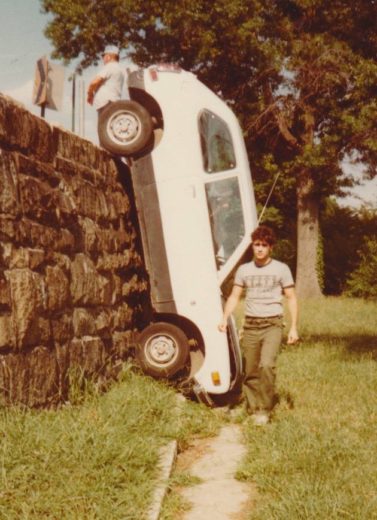
This is what can happen when a parked car is left in drive, or first gear, on a slight hill, without the manual brake on.

Photo courtesy of William Pickett. Probably from the 1980’s.

This is what can happen when a parked car is left in drive, or first gear, on a slight hill, without the manual brake on.
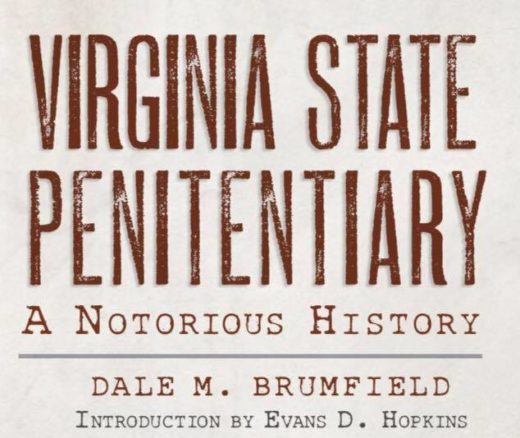
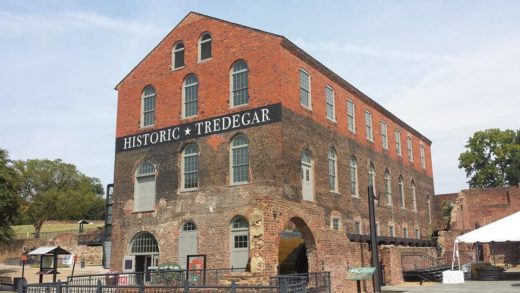
From the Facebook event page:
This Saturday at 7pm, there’s a history tour at Tredegar. Though the Tredegar Iron Works is most often associated with the Civil War, it was also part of the “Arsenal of Democracy” in both World Wars of the 20th Century. Join Ranger Mike Gorman for a unique look at the labor issues and production of one of Virginia’s most important industrial sites.
For more information, you can contact Ranger Gorman at this email address: mike_gorman@nps.gov
RVA Magazine has a new article entitled “HOLLYWOOD CEMETERY: A LOOK INSIDE ONE OF RICHMOND’S MOST CHERISHED LANDMARKS”
Excerpt:
An old piece of stone often holds more meaning than one might suspect, particularly in a city like Richmond. Although stone carved into monuments or statues may generate friction, a great deal more of it can remind us to ruminate on not only our history, but ourselves.
On a recent afternoon, a tour guide from The Valentine took RVA Mag on a little stroll to discover some history behind one of Richmond’s most cherished and popular landmarks, Hollywood Cemetery.
John Notman designed Hollywood Cemetery in 1847 and named it for its immense number of holly-wood trees. At the time, Richmond was experiencing the effects of the industrial revolution and much of the city was falling victim to industrialization–the pollution, smog, overpopulation and factory life was the reality for Richmonders.
The American Civil War Museum at Tredegar is hosting a talk on Thursday at 6 pm entitled “Refugees From Slavery” as part of their ‘Foundry Series’.
From the FaceBook event page:
What do Dadaab, Kenya and Zatari, Jordan have in common with the U.S. Civil War? Present-day refugee camps share important similarities with Civil War contraband camps. Discover how men, women, and children who fled from slavery to contraband camps influenced emancipation, the progress of the war, and the redefinition of U.S. citizenship.
Featuring:
Chandra Manning, Ph.D., Georgetown University.
Dr. Manning’s most recent book, Troubled Refuge: Struggling for Freedom in the Civil War, about Civil War contraband camps, won the Museum’s 2016 Jefferson Davis Award.Program Partners:
ReEstablish Richmond
CWS Richmond Refugee Resettlement
Artist Alfonso Perez Acosta
For more info and tickets, click here.

Excerpt:
In the military, the formerly wild Mike found “his niche,” his nephew said. Mike had a fiancée as he went off to war. He made corporal and was apparently hoping to make a career out of it when he smothered the grenade.
Nearly 45 years later, nephew Chip gets choked up talking about it. “I actually talked to one of the guys that was in the ambush . . . he gave up everything” for them.
Chip Folland’s son, Ryan Holland, joined the military and wrote to me that his great uncle “is a source of great pride for me in my own military career.
There are others who have reached out with their remembrances, including a woman whose brother went through basic training and to Vietnam with Mike Folland. People who want to you to know that Mike Folland is worth remembering.
From local history buff Fred Rogers:
Tom Robbins, the well known novelist (author of several published works including “Another Roadside Attraction” and “Even Cowgirls Get the Blues”) is a 1959 graduate of Richmond Professional Institute (VCU’s Monroe Park campus predecessor). During his last year at the school he served as editor and writer of the RPI student newspaper, the Proscript. His column that school year was entitled “Robbin’s Nest” and then “Walks on the Wild Side.” Robbins was concerned about the future of Monroe Park, threatened by corporate and political interests, to write about the park in the March 12, 1959 issue of the student paper. Below is an image of his column about Monroe Park. Here’s the link to the issue (download the file as a PDF):
http://dig.library.vcu.edu/cdm/compoundobject/collection/rps/id/3165/rec/444
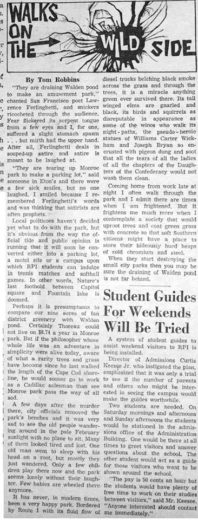
This post comes courtesy of Hollywood Cemetery’s FaceBook page:
John Banister Tabb was an American poet who received national and international recognition for his poems.
At the age of 17, he joined the Confederate Navy as a blockade runner, bringing supplies from Bermuda and Nassau to the Carolinas. He was eventually captured by Union troops and imprisoned at a Federal prison camp in Maryland. There he met fellow prisoner, Georgia poet-musician Sidney Lanier. Bound by their talents in music and poetry, Tabb and Lanier shared a life-long friendship.
Tabb went on to become a Roman Catholic priest and a professor of English. His poems were widely published in various prestigious magazines, and he became one of just two American writers admitted to the Oxford University Press Garland Series of Epigrams (1916).
He was buried in Hollywood Cemetery, Section 20, Lot 62 following his death in 1909. One of his poems is engraved on his tombstone:
If life and death be things that seem
If death be sleep and life a dream
May not the everlasting sleep
The dream of life eternal keep
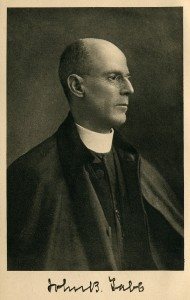
Re-post from neighbor Todd Woodson in the Fans of Monroe Park FaceBook group:
There was a free show in Monroe Park on June 1, 1969 including the Richmond debut of the band Child featuring a young Bruce Springsteen. They did 3 songs before, as I recall, they got shut down by police at the urging of the residents of the Prestwould. The songs played were Voodoo Child, Jennifer and Crown Liquor. This photo, courtesy of BruceBase was supposedly taken of the Boss at Monroe Park at the 1969 show. They would return to Monroe Park on July 18, 1971 as the Bruce Springsteen Band…
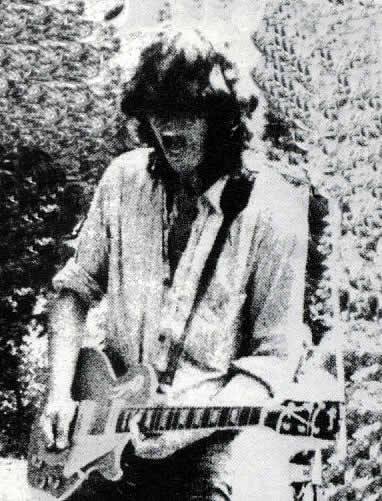
The American Civil War Center at Tredegar Iron Works is hosting ‘The Foundry Market’ from 12 pm to 4 pm this Sunday (and also June 11).

From event description:
The American Civil War Museum’s Foundry Market is an artisan craft fair with an emphasis on handmade, local products. We’ll have vendors from across the state, demonstrations of craftsman at work, and food trucks.
Bring the whole family down for a Sunday at Historic Tredegar and imagine what our bustling ironworks might have been like 150 years ago.
PARTICIPATING VENDORS:
Beego Handmade
Flourish Creative
Grid+Love
Liberatus Jewelry
Matthew Pellman
Morris and Norris
MudLOVE
New Custom
Nicholas Creek Forge
PaperFreckles
Paper Rose
Petite Shards Productions
Renan Banjos
Robin’s Egg Jewelry
Ruby Belle Adornments
Sew Brave Designs
The Bird & Elephant
The Timbered Wolf
The Wild Wander
thimbleberry….and more!